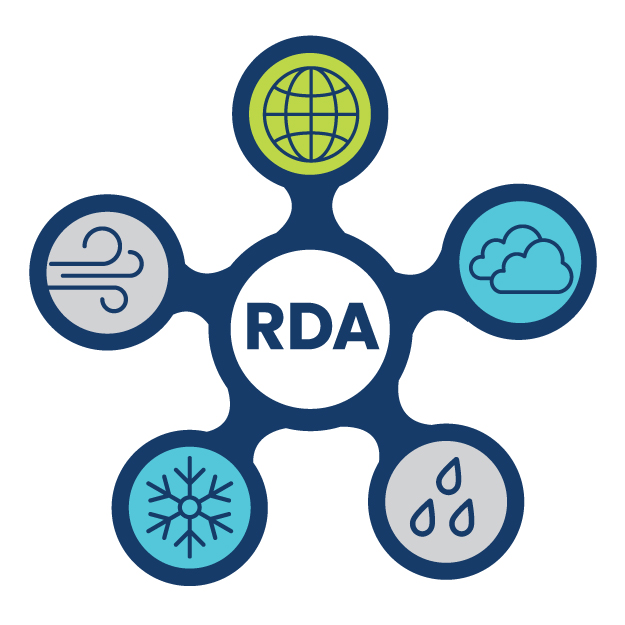
NOAA CPC Morphing Technique (CMORPH) Global Precipitation Analyses Version 0.x
d502001
| DOI: 10.5065/D60R9MF6
NOTE: This dataset has been superseded by CMORPH version 1.0, which is available in RDA dataset ds502.2. Users are advised to transition to this updated dataset.
This dataset contains version 0.x of the NOAA CPC MORPHing technique (CMORPH) global precipitation analyses covering the period June 2014-present. Version 0.x comprises the original CMORPH precipitation analyses that CPC has been generating since CMORPH became operational in December 2002, and is generated using an improving algorithm with inputs of evolving versions. Older CMORPH version 0.x data (prior to June 2014) may be accessed from RDA dataset ds502.0.
CMORPH produces global precipitation analyses at very high spatial and temporal resolution. This technique uses precipitation estimates that have been derived from low orbiter satellite microwave observations exclusively, and whose features are transported via spatial propagation information that is obtained entirely from geostationary satellite infrared data. Precipitation estimates are derived from the passive microwaves aboard the DMSP 13, 14 and 15 (SSM/I), the NOAA-15, 16, 17 and 18 (AMSU-B), and AMSR-E and TMI aboard NASA's Aqua and TRMM spacecraft, respectively. These estimates are generated by algorithms of Ferraro (1997) for SSM/I, Ferraro et al. (2000) for AMSU-B and Kummerow et al. (2001) for TMI. Note that this technique is not a precipitation estimation algorithm but a means by which estimates from existing microwave rainfall algorithms can be combined. Therefore, this method is extremely flexible such that any precipitation estimates from any microwave satellite source can be incorporated.
| Precipitation Amount |
Latitude Range: Southernmost=59.875S Northernmost=59.875N Detailed coverage information Detailed coverage information 0.25° x 0.25° from 0.125E to 359.875E and 59.875S to 59.875N (1440 x 480 Longitude/Latitude)
 This work is licensed under a Creative Commons Attribution 4.0 International License.
This work is licensed under a Creative Commons Attribution 4.0 International License.